Successful Conclusion of the 11th Roundtable Meeting of the High-Efficiency HJT 760 W+ Club: 760 W Technology Leading the World
On April 18, the 11th Roundtable Meeting of the High-Efficiency HJT 760 W+ Club was convened in Chengdu, Sichuan Province. Leascend Photovoltaic served as the chair. The event brought together 13 other leading HJT companies—CNBM Jetion Solar, Golden Solar, Grand Sunergy, Huasun, Jiangsu Soltrend, Mingyang, Quanwei, Risen Energy, Shanghai Hency Solar, SoleFiori, SPIC New Energy, Tongwei, and Zhejiang Winhitech New Energy (listed alphabetically). Representatives from Maxwell and SOLARZOOM also attended. In the advancement of HJT technology, industry enterprises and experts are working hand in hand to meet the challenges.
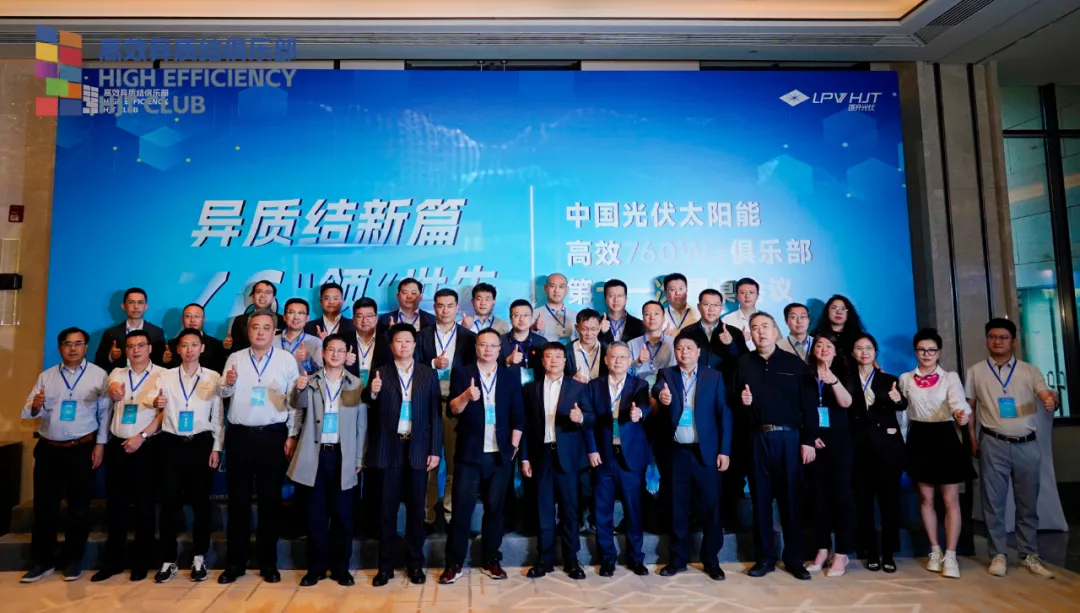
Group Photo of the 11th Roundtable Meeting of the High-Efficiency HJT 760 W+ Club
Themed “HJT's New Chapter: 760 W Technology Leading the World,” the session focused on technical breakthroughs and innovative practices in HJT technology, showcasing the innovative application scenarios and benchmarking cases. Participants discussed strategies for technological innovation and industrial upgrading, emphasizing the importance of cooperation among upstream and downstream enterprises to seize opportunities in the green development sector and advance the clean energy transformation.
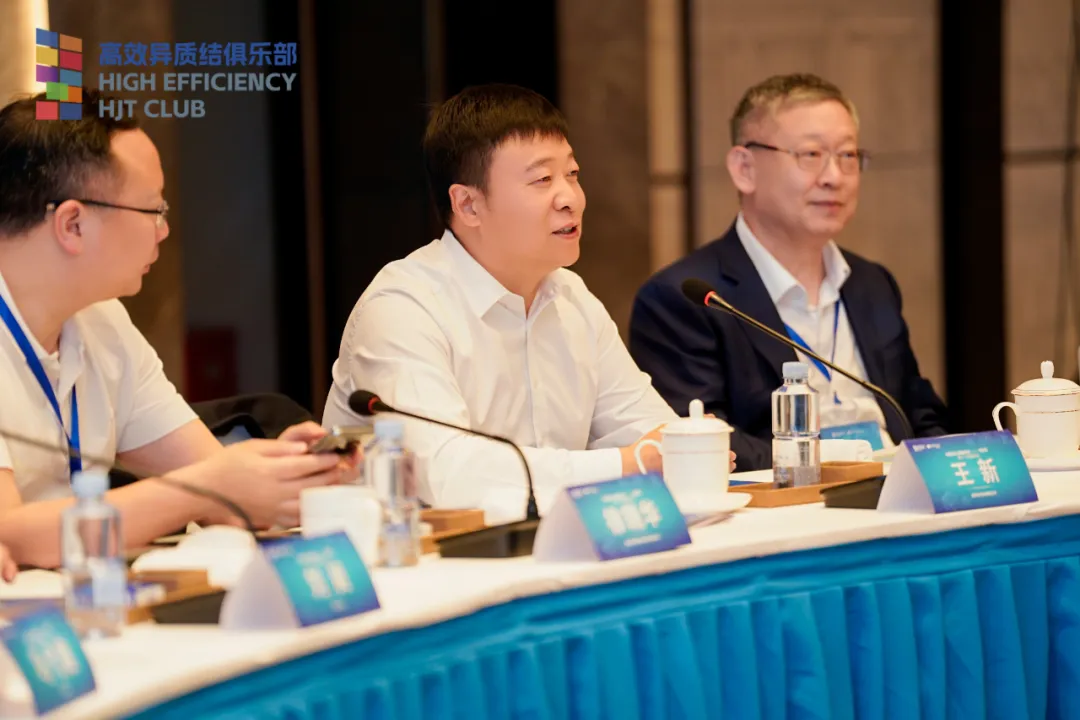
Wang Xin, Chairman of Leascend Photovoltaic
Wang delivered the opening remarks, welcoming attendees and highlighting the potential of HJT technology despite current challenges in the PV industry. He called for deeper collaboration in technology, market development, and supply chain management, as well as joint efforts to accelerate international market expansion.
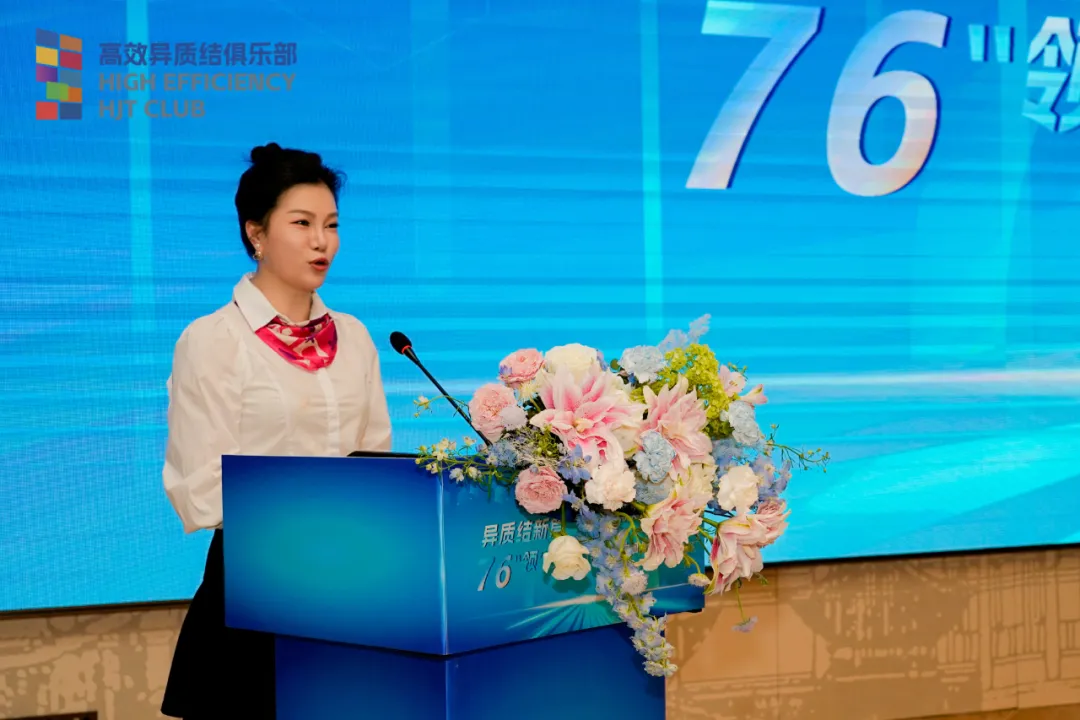
Tang Doudou, Vice President of Leascend Photovoltaic, at host
The meeting was hosted by Tang, with participation from Tang Xuan, Executive Vice President; Jiang Wanchang, General Manager of Meishan Leascend; and Tang Anmin, R&D Director of Leascend Photovoltaic.
Policy Support and Industry Outlook: HJT Technology Gains Development Momentum
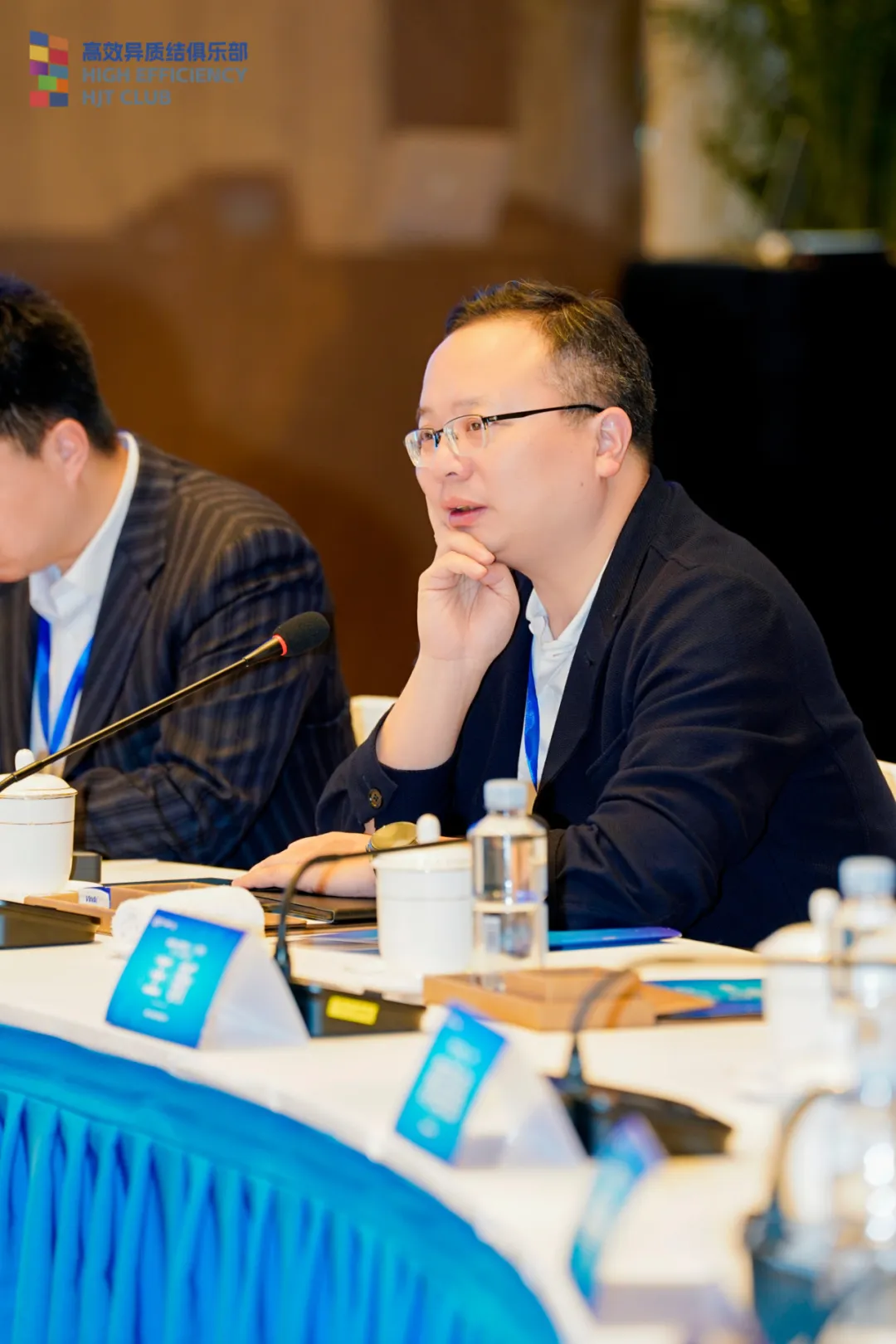
Xu Xiaohua, Chairman of Huasun
The roundtable opened with discussions on preferential policies and industry challenges. Government authorities announced plans to increase the share of HJT modules in large-scale solar power plants, enhancing practitioners’ confidence. Xu emphasized that HJT manufacturers must unite to withstand the ongoing price pressures across the PV supply chain. HJT Companies should focus on procurement opportunities with central enterprises and expand into overseas markets to fully activate production lines. “Survival is the foundation of development,” Xu stated. Based on long-term evaluations of this technology pathway, the industry can achieve 25 to 30 GW of HJT module deliveries in 2025, ensuring stable growth for the year.
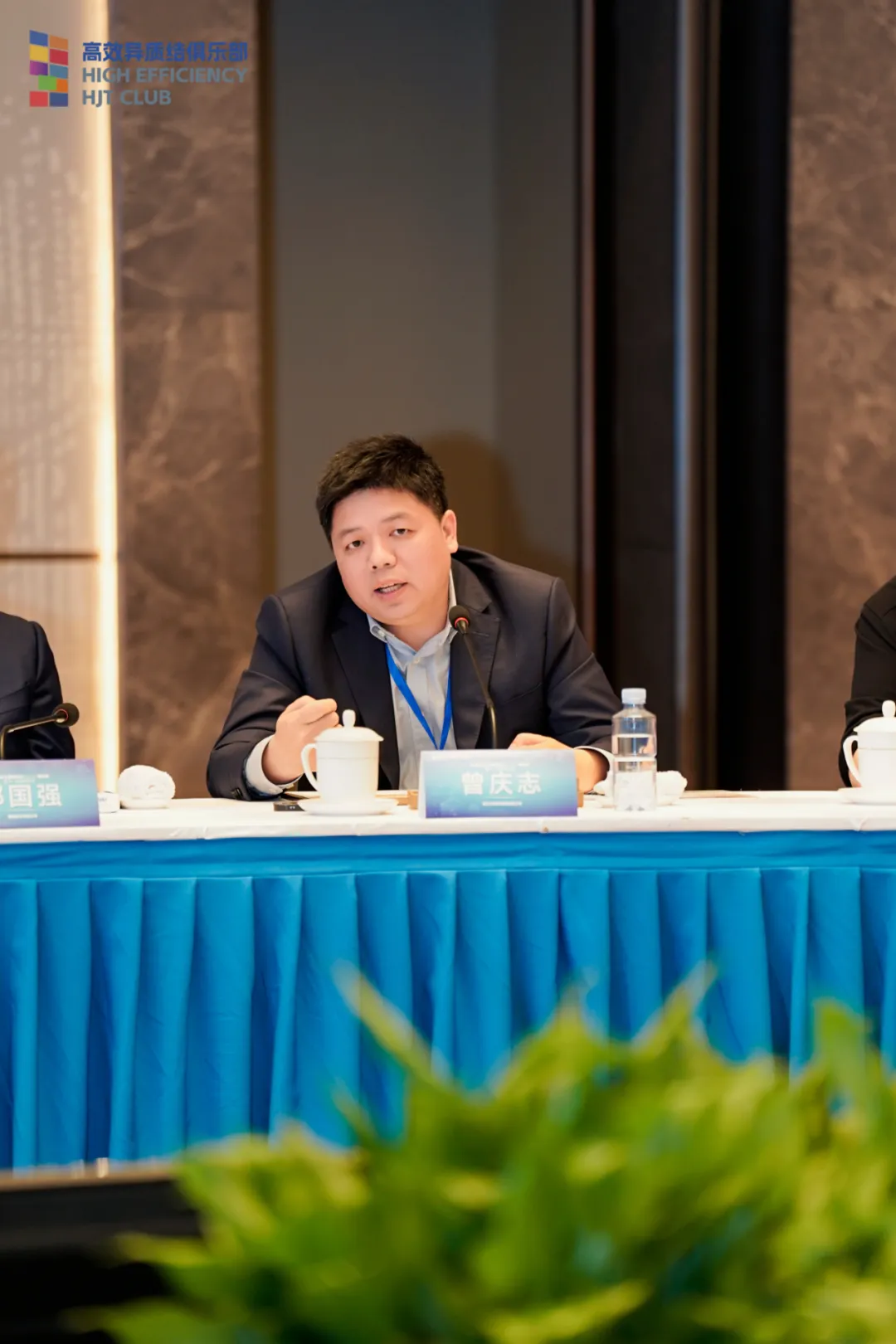
Zeng Qingzhi, Chairman of Zhejiang Winhitech New Energy
Zeng shared insights from a client-side perspective. Policy shifts have led to a slowdown in private-sector investment and cautious responses from central enterprises. However, with ongoing technological iteration, solar power is expected to gradually replace thermal power, thanks to its advantage in cost per kilowatt hour.
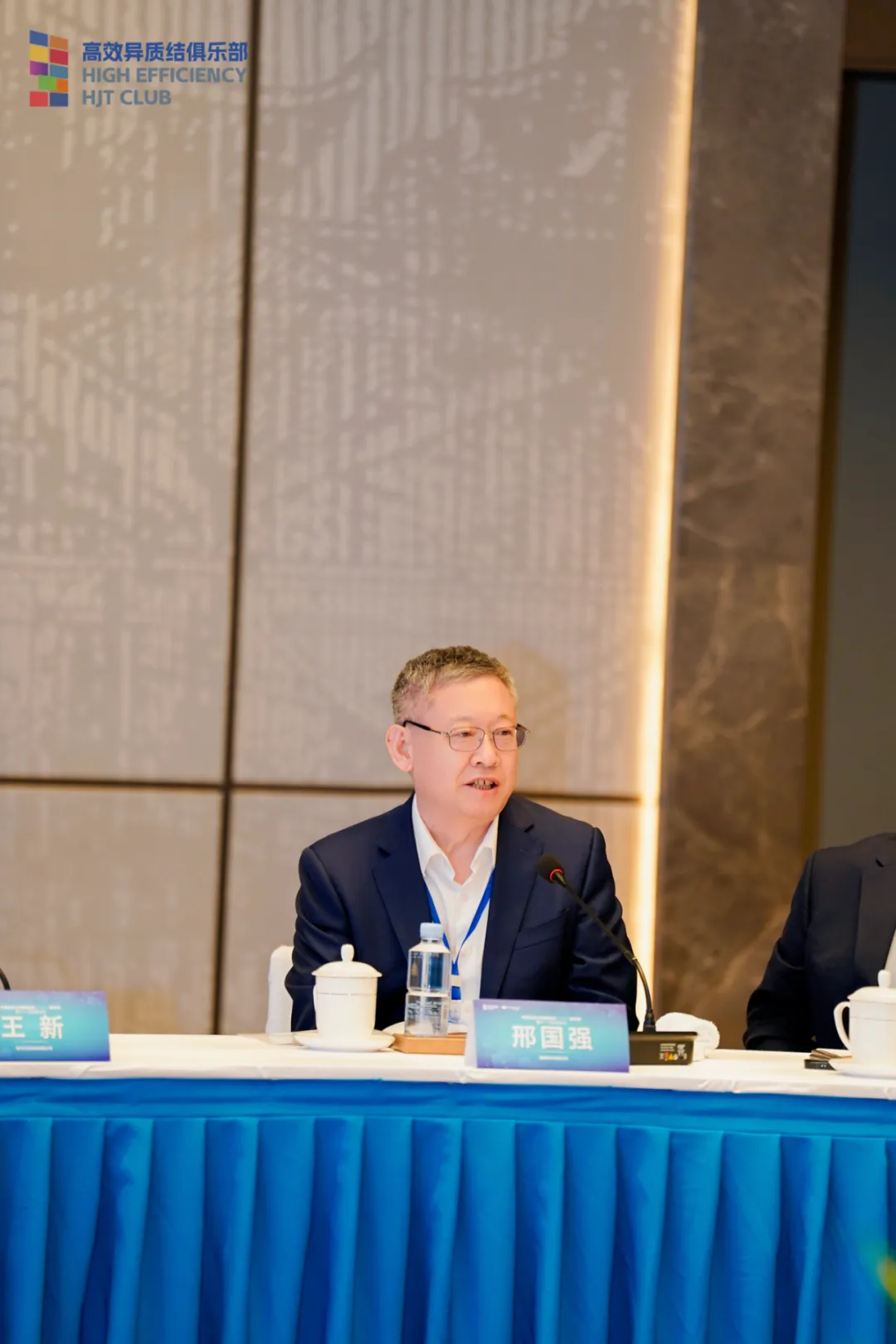
Xing Guoqiang, CTO of Tongwei
Xing analyzed HJT’s position in the competitive landscape. HJT technology must push module power outputs beyond 760 W to maintain its lead over TOPCon. If the expected market share held by HJT products becomes a reality, the annual demand for them could be sufficient for the industry to survive.
Technological Breakthroughs: Photon Sintering, Edge Optimization, and Copper Plating Drive Efficiency Gains
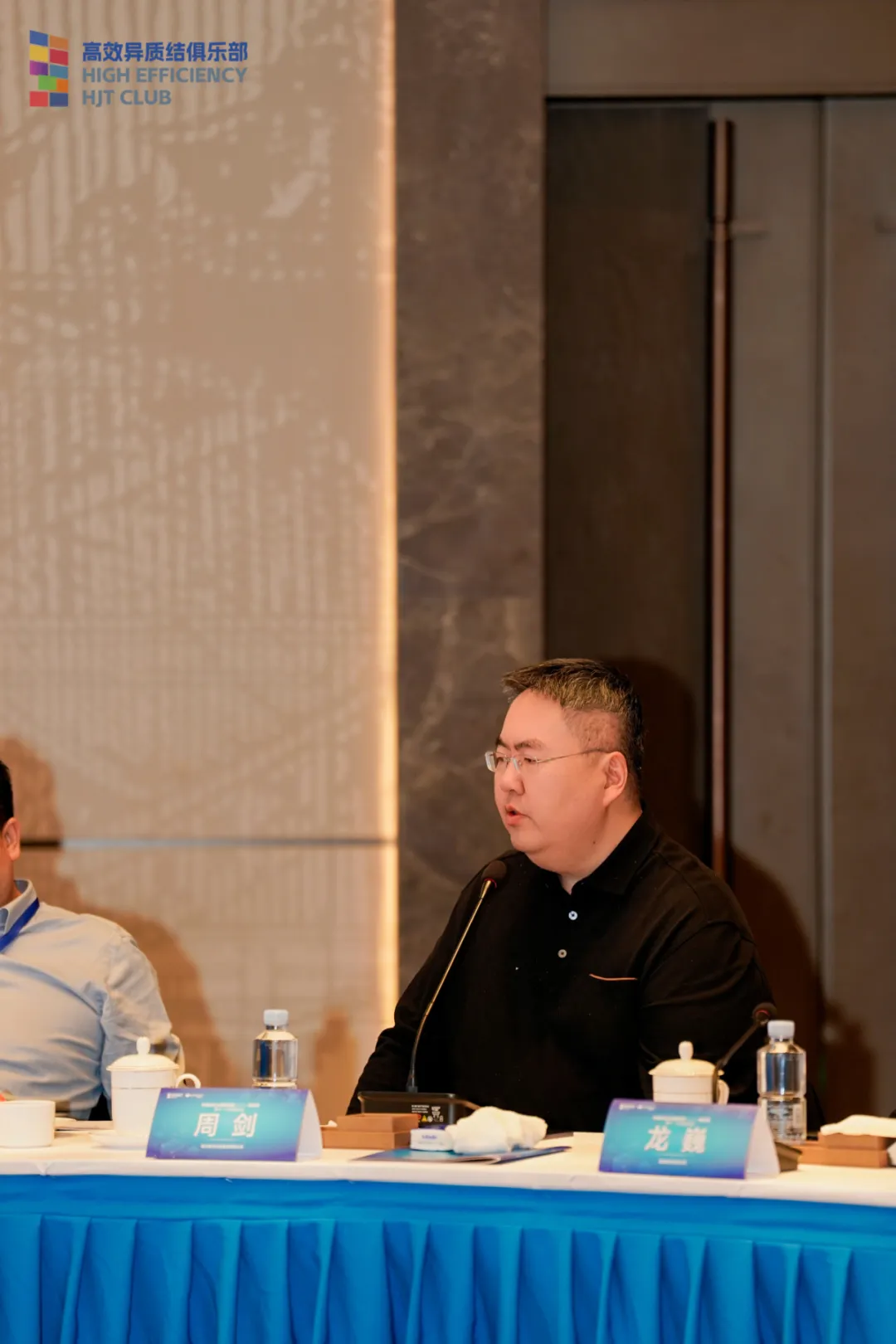
Zhou Jian, Chairman of Maxwell
Technical breakthroughs remain central to the survival and growth of HJT products. Bifacial steel mesh and photon sintering, edge optimization, and multi-slicing can help reduce costs and improve efficiency. Zhou proposed a low-cost retrofit plan: a photon sintering process that increases temperature differentials by up to 100℃, which reduces line resistance by 30% at relatively low investment. Zhou also introduced an edge optimization strategy: PECVD edge optimization, PVD narrow masking, and selective edge etching. These technologies can increase module power by 15 to 18 W and support large 210.6 mm wafers. Paired with back-contact and seedless copper electroplating on the N-type surface, the upgrades aim to push HJT module output toward 775 W.
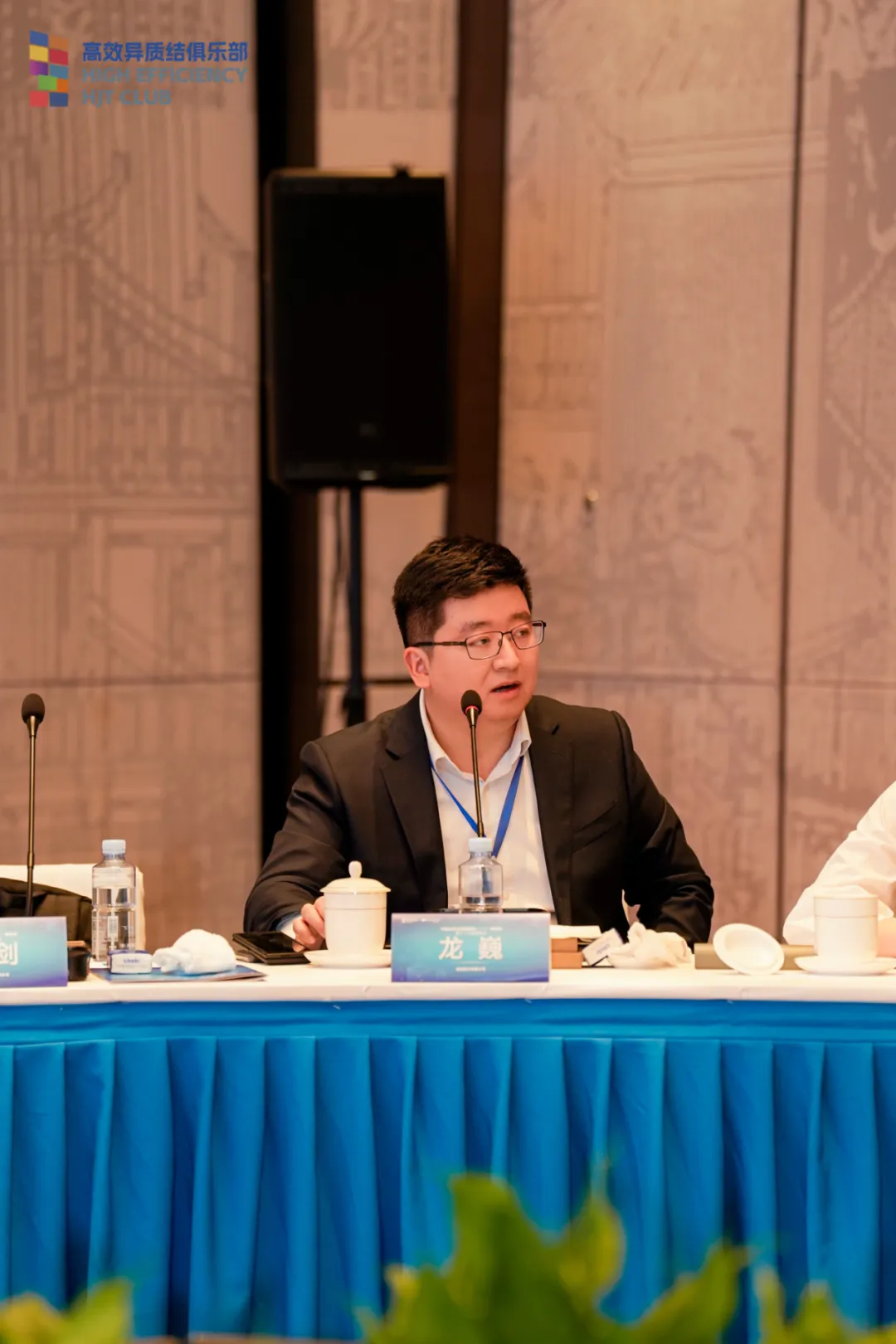
Long Wei, Director of PV Technology Center of Tongwei
Long analyzed the competition between silver-coated copper and copper electroplating technologies. Modules with silver-coated copper currently reach 740 W in mass production, but modules with copper plating offer greater long-term potential because of their finer bar designs. The technology targets a 785 W output. During the technical session, experts including Wang Wei, CTO of SPIC New Energy; Lian Weifei, R&D director at Zhejiang Winhitech New Energy; and Du Daxue, Director Engineer at Shanghai Hency Solar Technology, discussed bifacial plating feasibility, cost comparison between copper interconnections and silver-coated copper, and edge optimization techniques.
Market Cooperation: A New Path to Cracking the Industry Dilemma
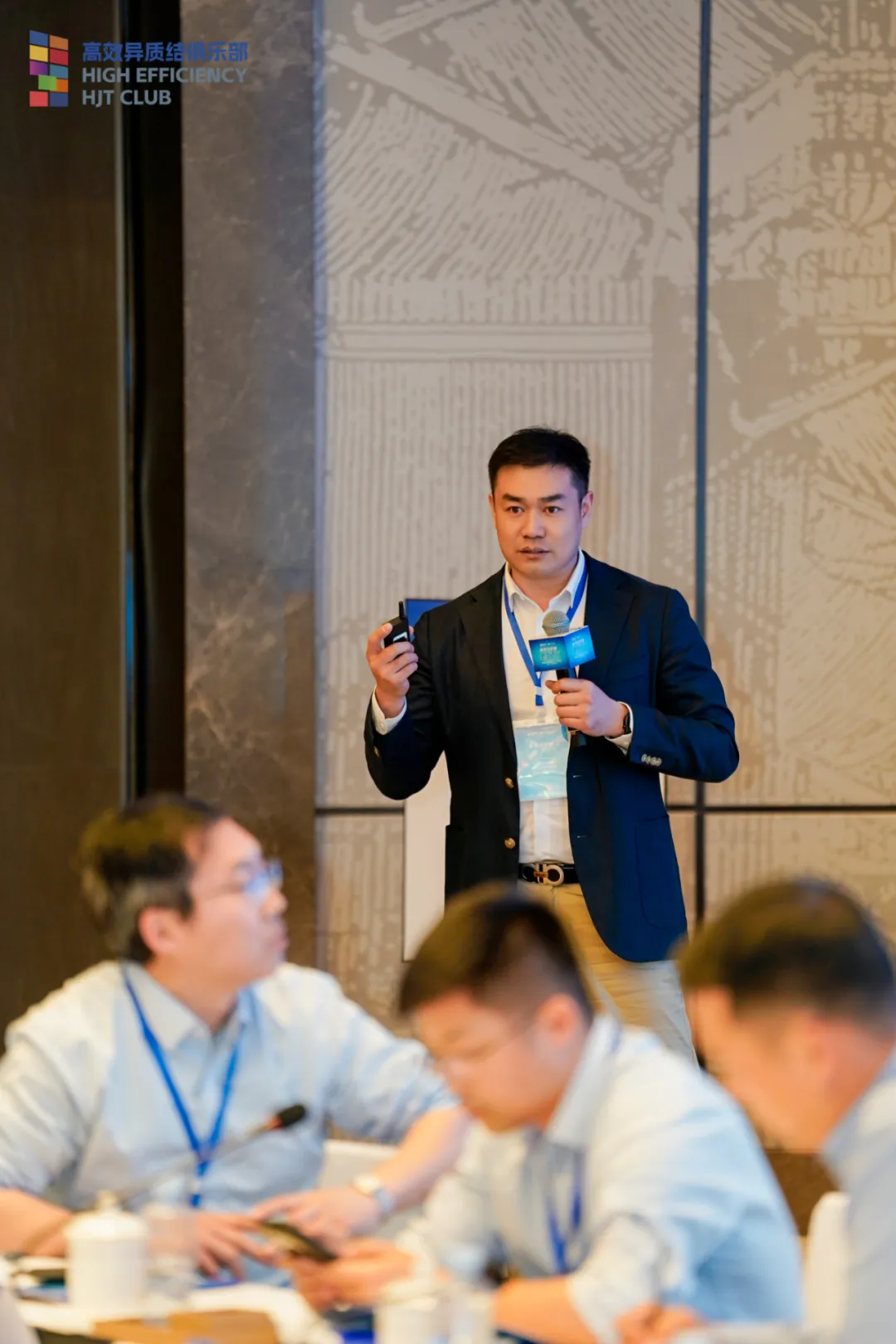
Xing Zhou, Vice President of Huasun
Xing said China’s PV sector is navigating policy adjustments, with project returns under pressure due to market volatility. However, international demand for HJT products—especially in Europe and the Middle East—is rising. Xing suggested the formation of a sales alliance to share orders, standardize HJT product quality, align parameters for pilot projects, and promote vertical installation models.
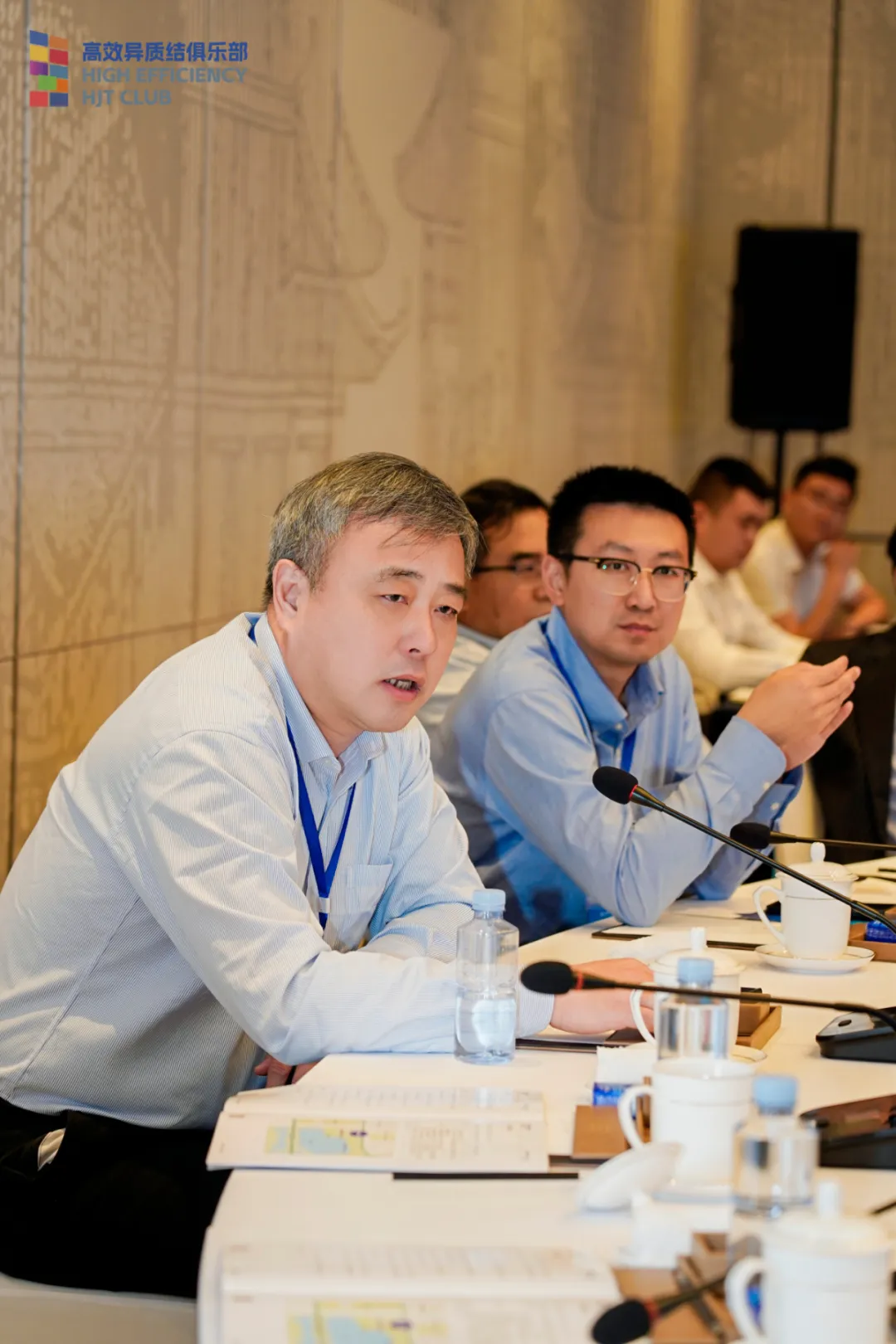
Zong Jun, CEO of SPIC New Energy
Zong said central enterprises are delaying project approvals due to unclear electricity pricing models. However, advanced technologies such as vertical systems may improve project returns and revive market momentum.
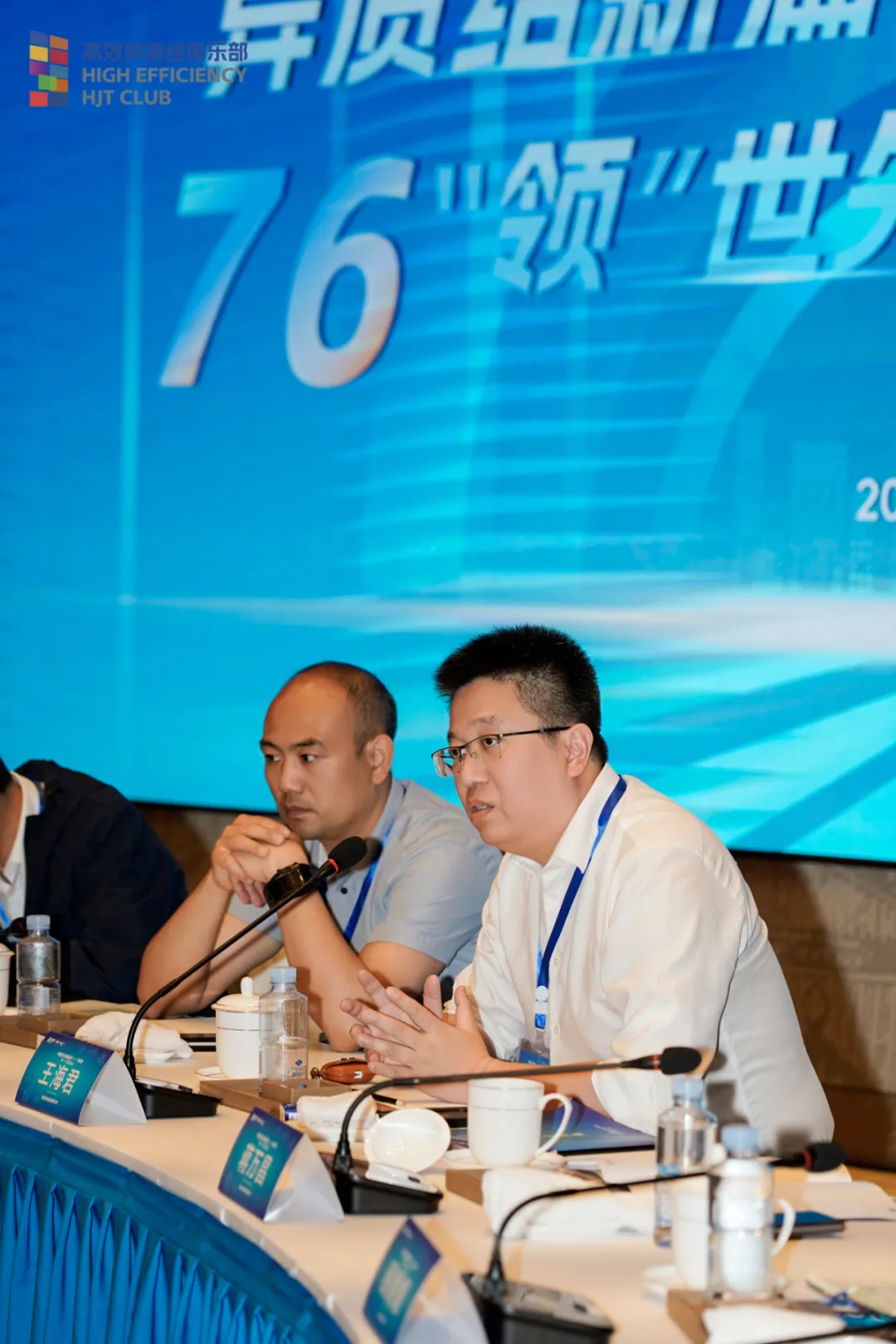
Wang Haijun, Vice President of SoleFiori
Wang encouraged the industry to draw lessons from the wind power alliance model. He called for reducing internal competition and securing a firm position for HJT during the current downturn.
Vertical Installation: A Strategic Frontier for HJT Differentiated Competition
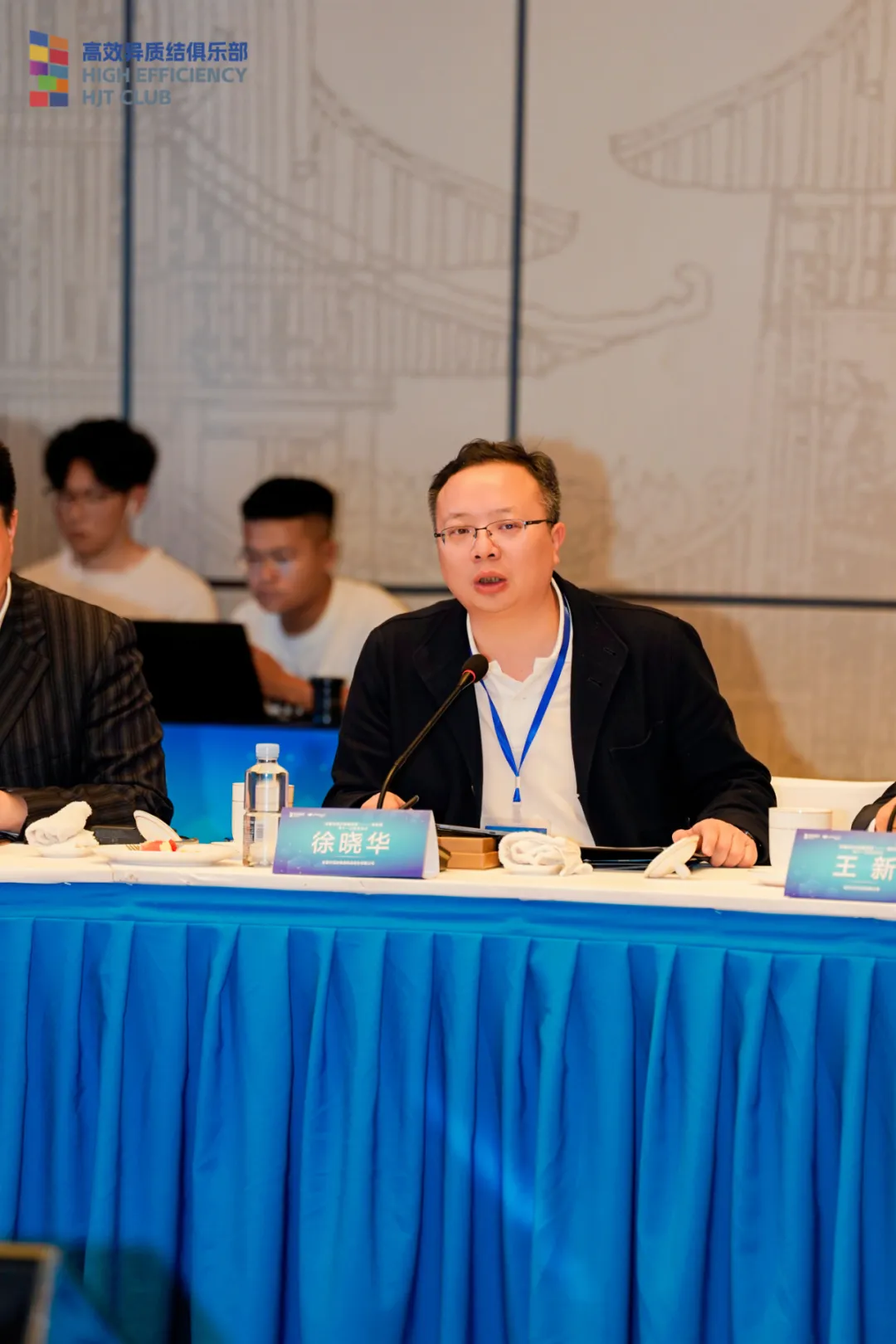
Xu Xiaohua, Chairman of Huasun
Vertical installation became a key topic during the meeting. Xu proposed conducting empirical studies on vertical-use scenarios for HJT modules systematically. He recommended building a multi-dimensional application database to support large-scale adoption. Xu emphasized the need for industry collaboration, strategic confidence, innovation-driven growth, and value-focused initiatives to overcome cyclical shackles.
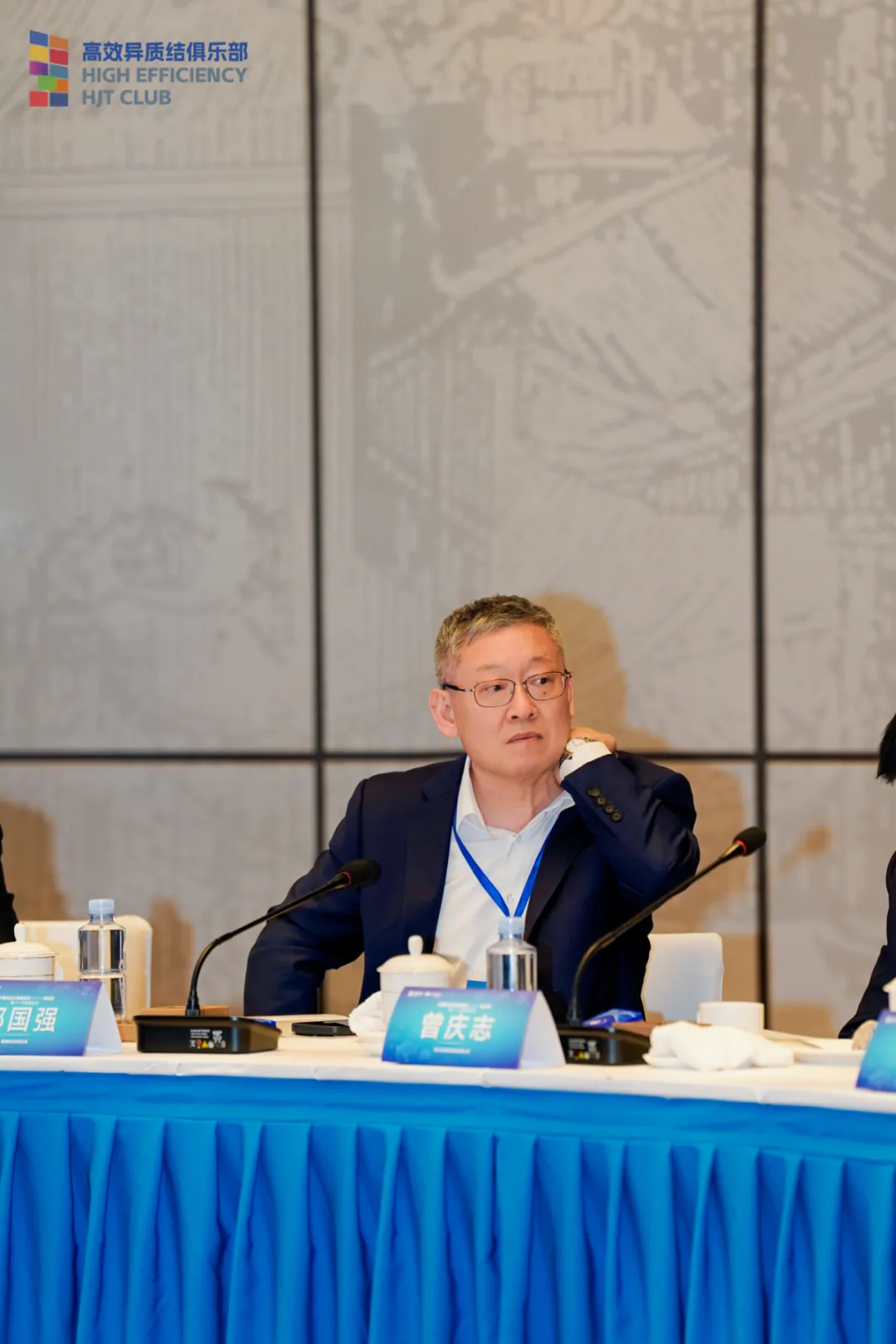
Xing Guoqiang, CTO of Tongwei
Xing noted that vertical installation of HJT modules requires careful evaluation of trade-offs between power generation and economic performance. He also highlighted challenges related to panel layout, cable optimization, and land value conversion, urging long-term, multi-angle exploration by HJT companies.
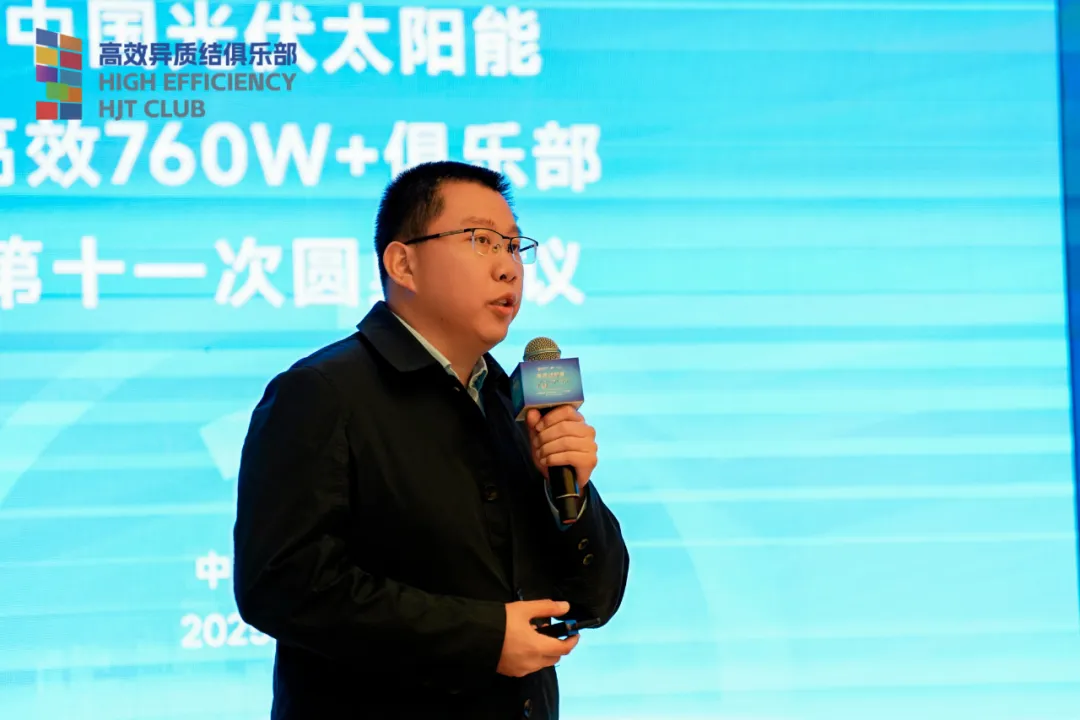
Ma Yiwei, Vice President of SOLARZOOM
Ma estimated that vertical installation can reduce land usage by 40%. If China relaxes its red line of 1.8 billion mu (about 120 million hectares) of farmland, the application potential for HJT modules in eastern regions would increase significantly.
Cost Attack: The Road to HJT Cost Reduction in the Face of Fluctuating Silver Prices
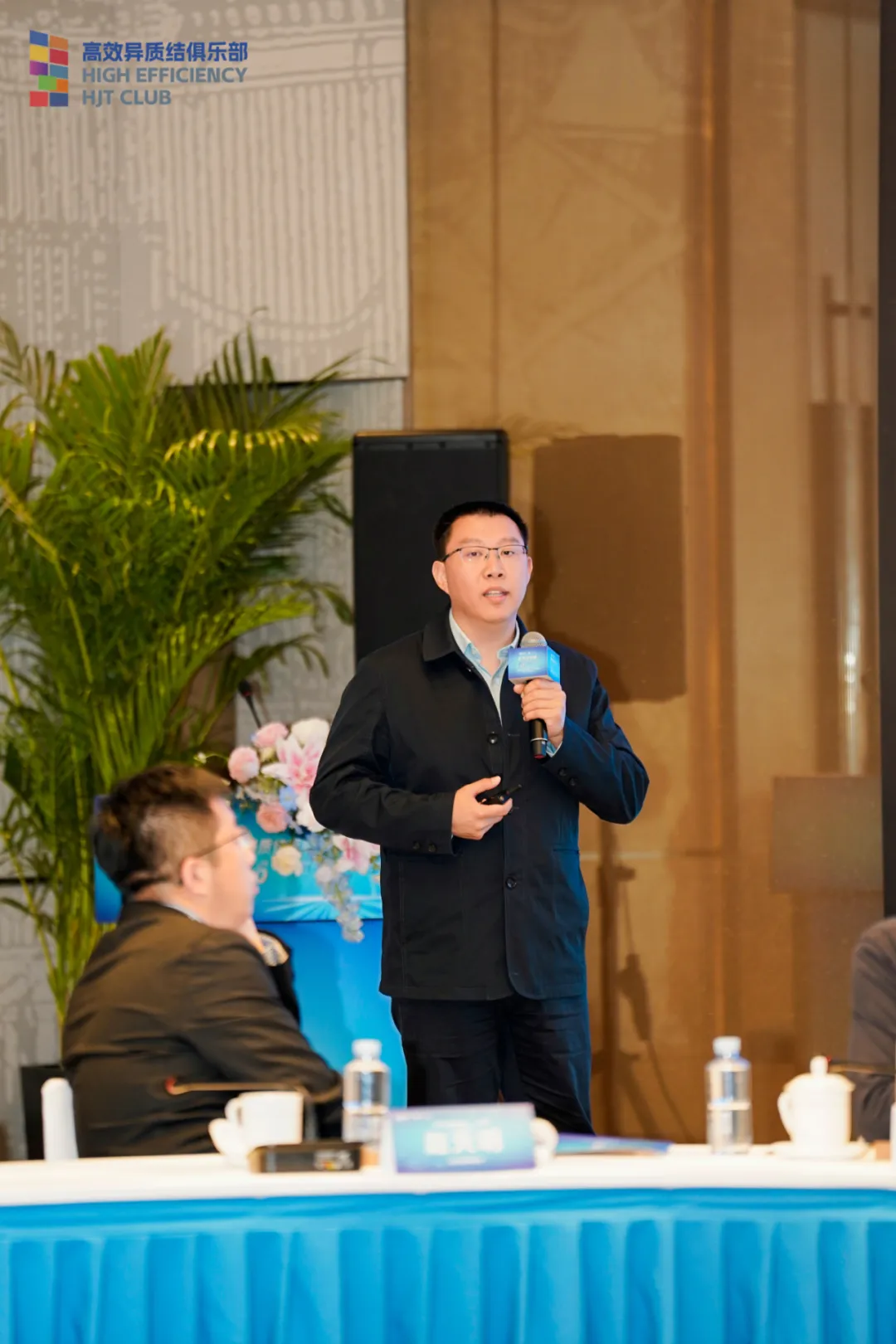
Ma Yiwei, Vice President of SOLARZOOM
Silver prices, which have surged 30%, are pressuring HJT solar manufacturers as silver remains a significant cost driver. The industry is turning to ultra-low silver content (10%) and copper electroplating to cut costs. Ma outlined how rising silver prices impact PV cell technology and the energy dynamics in a changing international system and order. He elaborated on the logic behind the rise in silver prices and the implications for the HJT industry. If international silver prices reach $50 per ounce, HJT’s cost advantage could expand to $0.05 per watt. However, he stressed the need for copper electroplating and ultra-low silver content to hedge against long-term precious metal volatility.
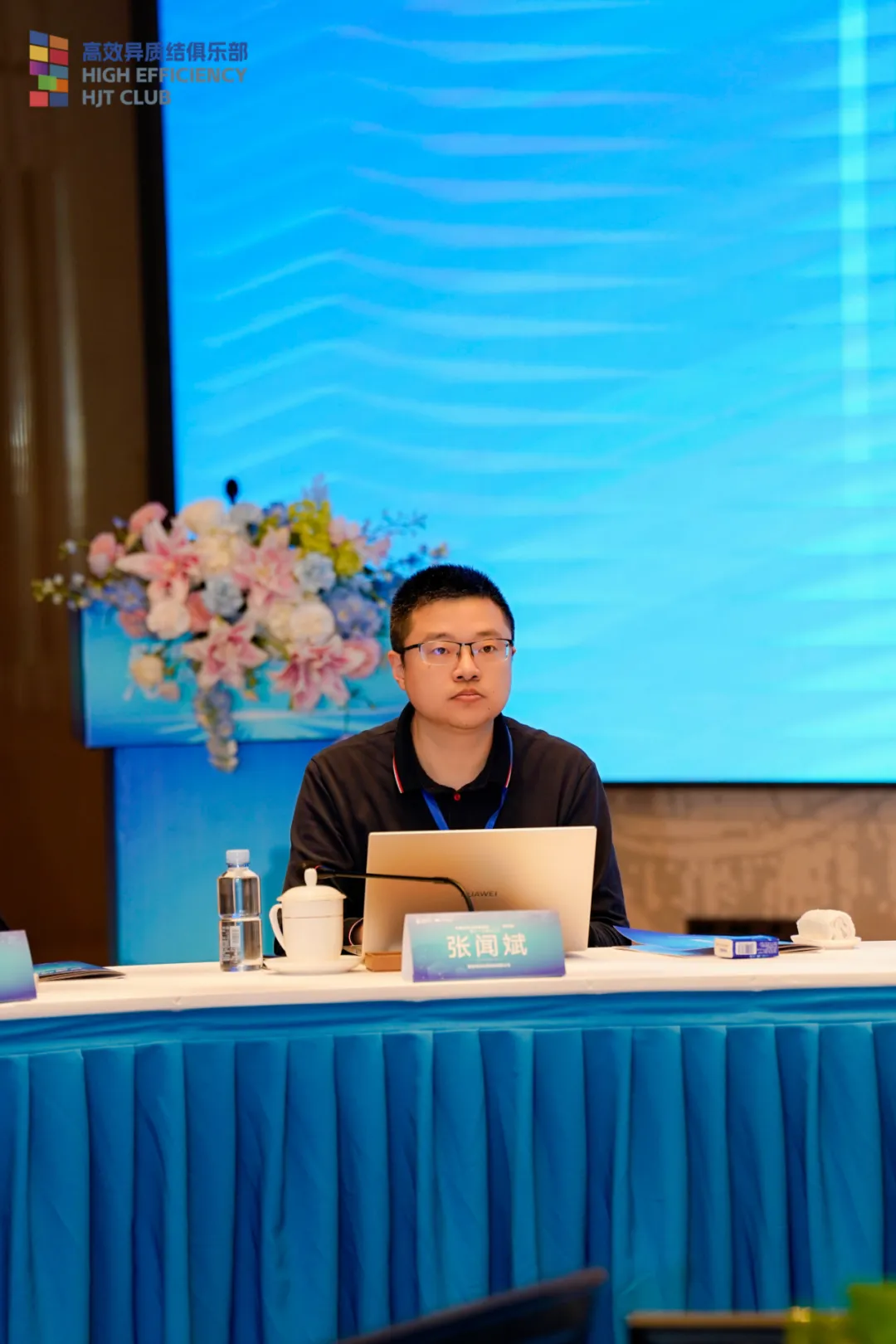
Zhang Wenbin, CTO of Grand Sunergy Technology
Zhang proposed a design using vertically aligned narrow plates processed simultaneously. This method could double capacity compared to traditional processes and reduce processing costs by nearly 50%. That could open up a new path for the industry to reduce costs and increase efficiency.
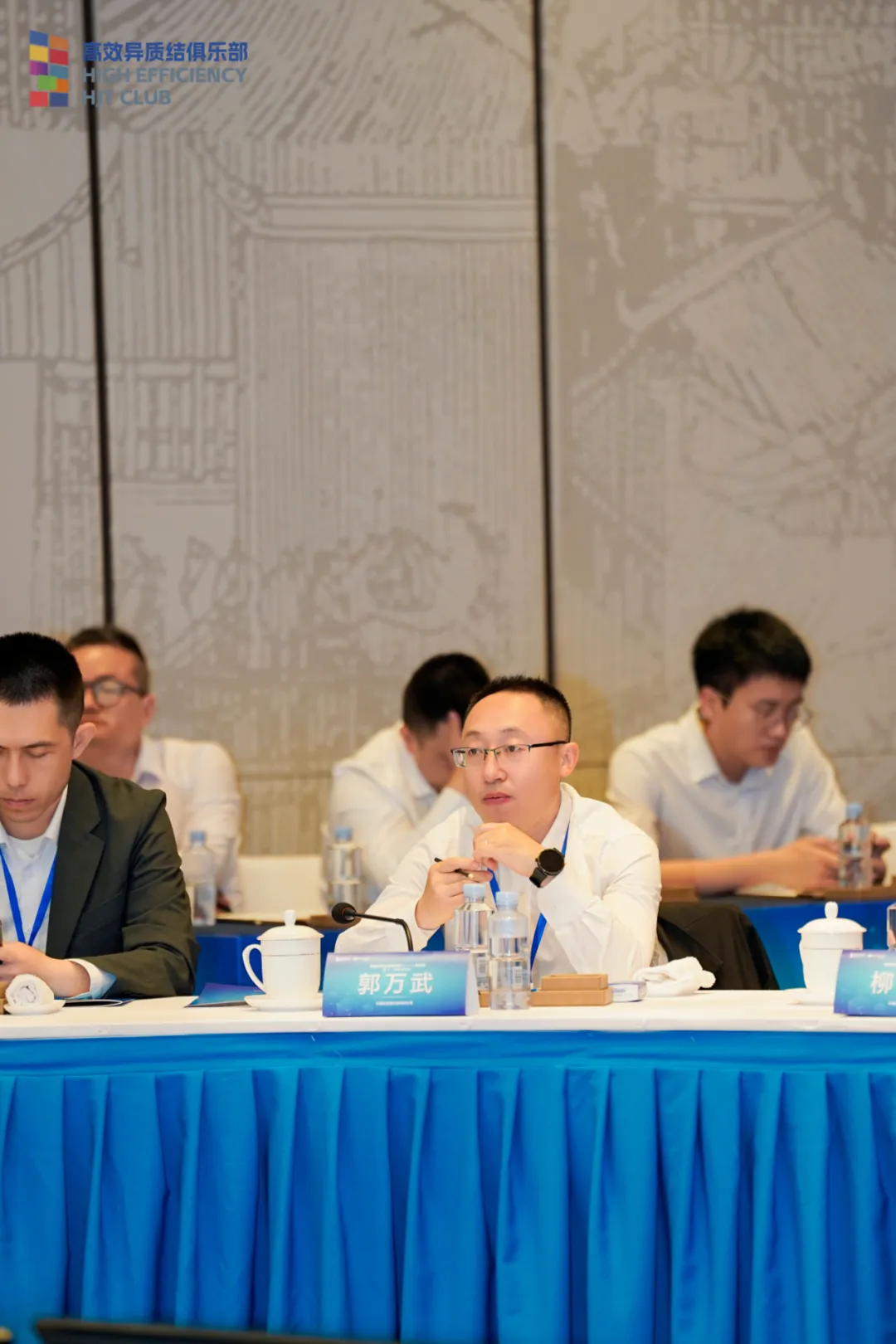
Guo Wanwu, Deputy General Manager of CNBM Jetion Solar
Guo said HJT has already adopted ultra-low silver consumption. Combined with thinner silicon wafers and domestically produced equipment, he expects costs to match those of TOPCon technology. He called on the industry to push equipment cost reductions, share capacity, and adopt standardized production to overcome the difficulties through the club and industry alliances. The industry can accelerate the release of HJT’s potential for additional value increase due to efficient features, promoting the competitiveness of the whole industry chain.
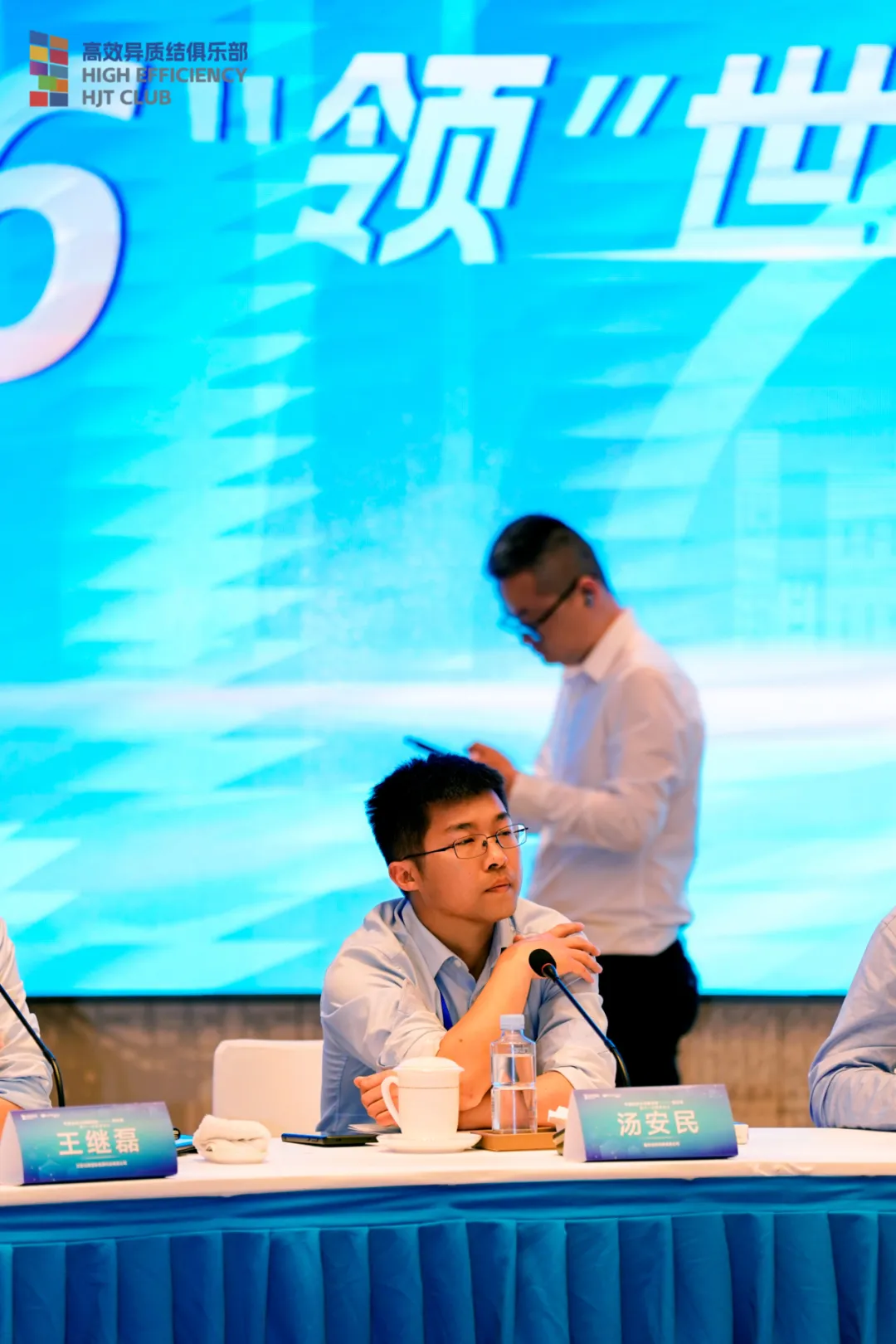
Tang Anmin, R&D Director of Leascend Photovoltaic
Tang compared HJT and TOPCon costs, especially processing costs. He proposed improving efficiency and lowering costs through optimized raw and subsidiary materials and new equipment.
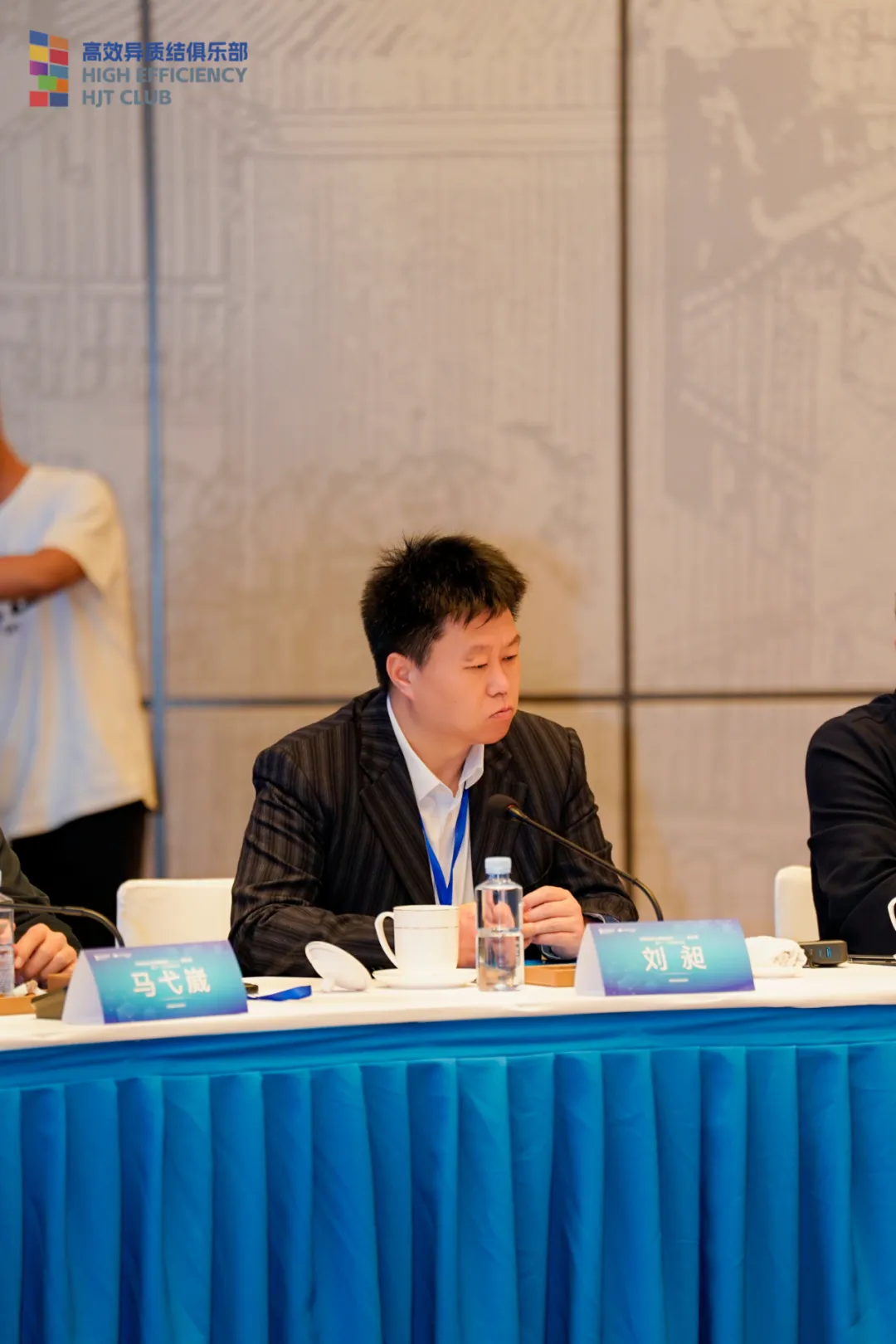
Liu Chang, Executive Secretary-General of the High-Efficiency HJT 760 W+ Club
As the meeting concluded, Liu announced that SPIC New Energy will chair the next roundtable. He hoped that the leaders and experts would gather in Beijing next time for more in-depth exchanges.
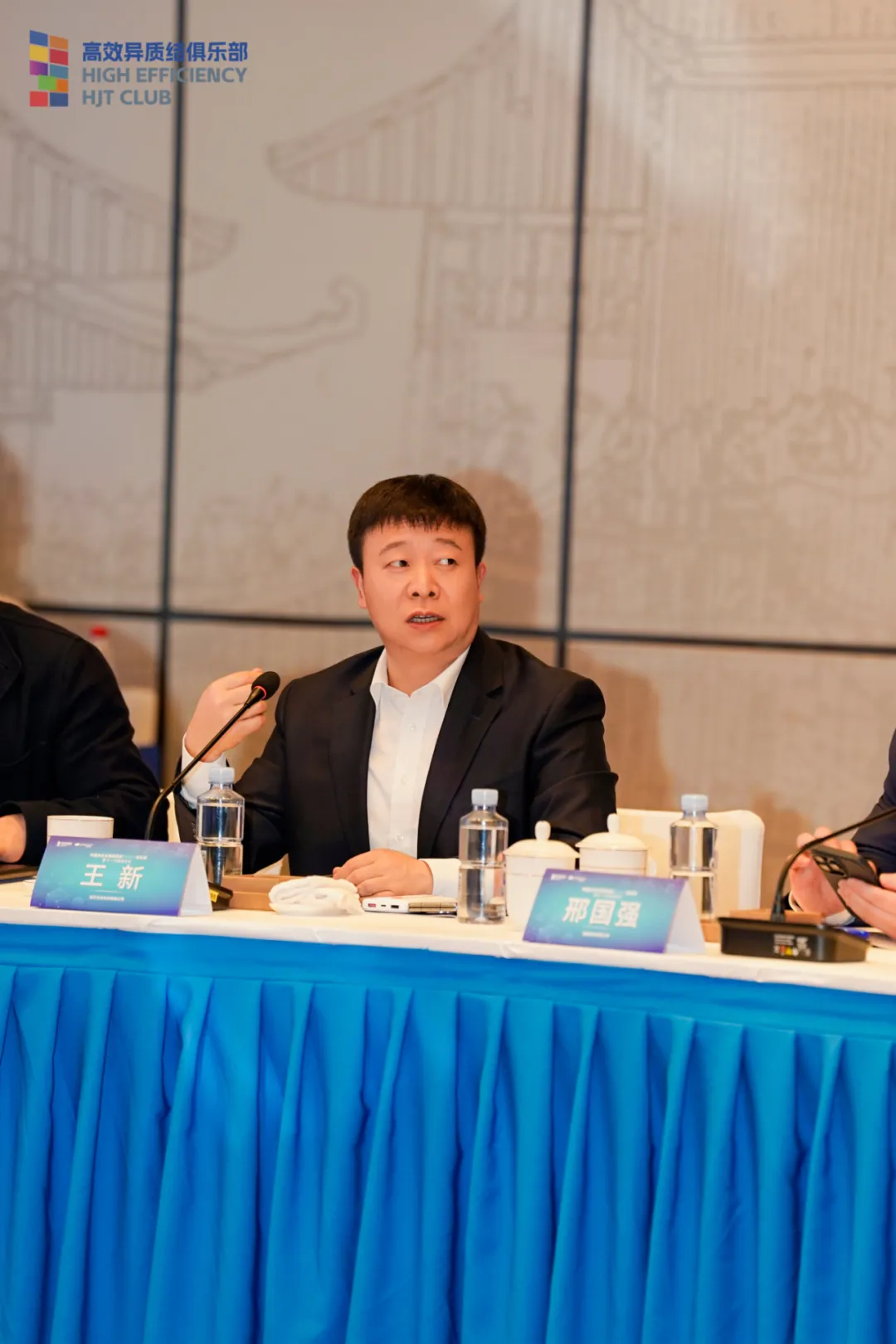
Wang Xin, Chairman of Leascend Photovoltaic
Wang noted that the industry should maintain confidence and embrace a three-pronged strategy of technological cost reductions, market collaboration, and overseas expansion. Attendees agreed to strengthen supply chain cooperation and form task forces to advance vertical installation pilots and copper electroplating adoption.
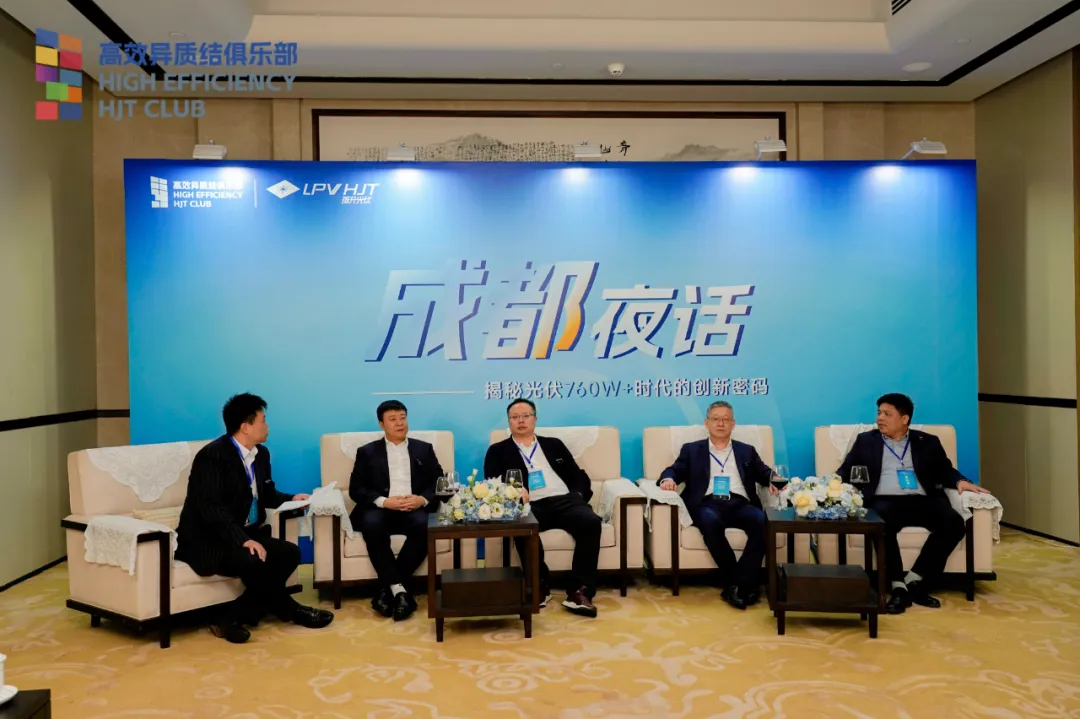
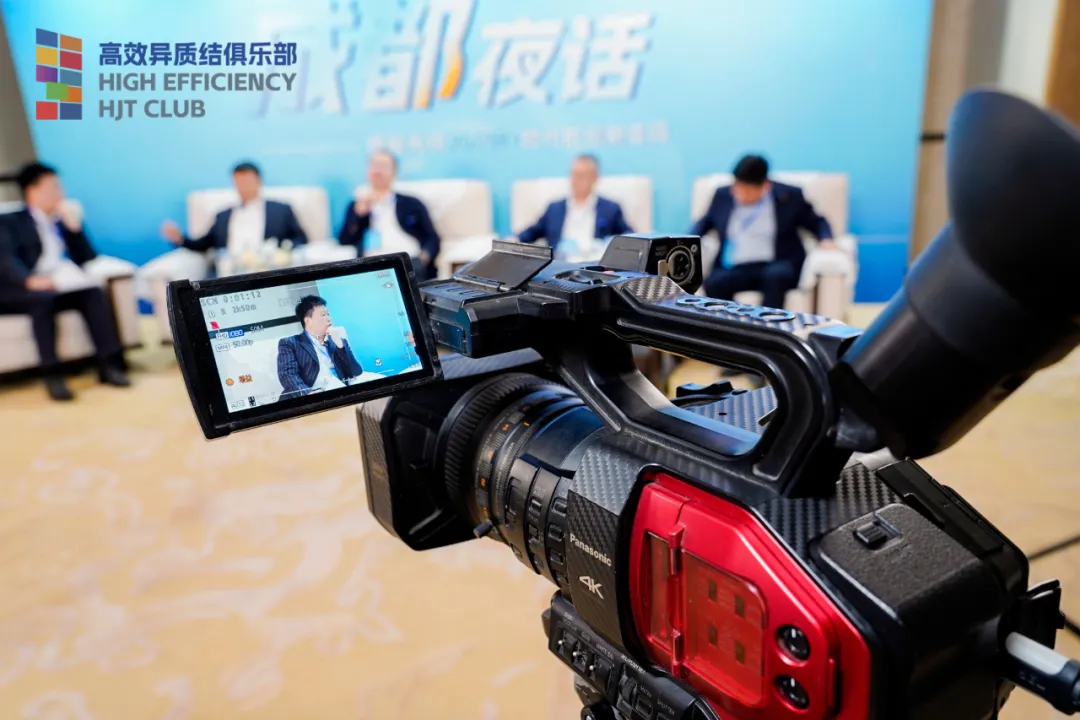
Chengdu Night Talk Live
During the roundtable, Leascend Photovoltaic hosted a livestream event titled “Unlocking Innovation in the 760 W+ PV Era” in Chengdu. Under the moderation of Liu Chang, executive secretary-general of the club, several industry leaders joined the online session. Participants included Wang Xin, chairman of Leascend Photovoltaic; Xu Xiaohua, chairman of Huasun; Zeng Qingzhi, chairman of Zhejiang Winhitech; and Xing Guoqiang, CTO of Tongwei. They discussed the practical challenges faced by club members during industry development. Ma Yiwei, Vice President of SOLARZOOM; Xing Zhou, Vice President of Huasun; Zhou Jian, Chairman of Maxwell; Long Wei, Director of PV Technology Center of Tongwei; and Tang Anmin, R&D director of Leascend Photovoltaic, each shared a presentation about their company’s development.
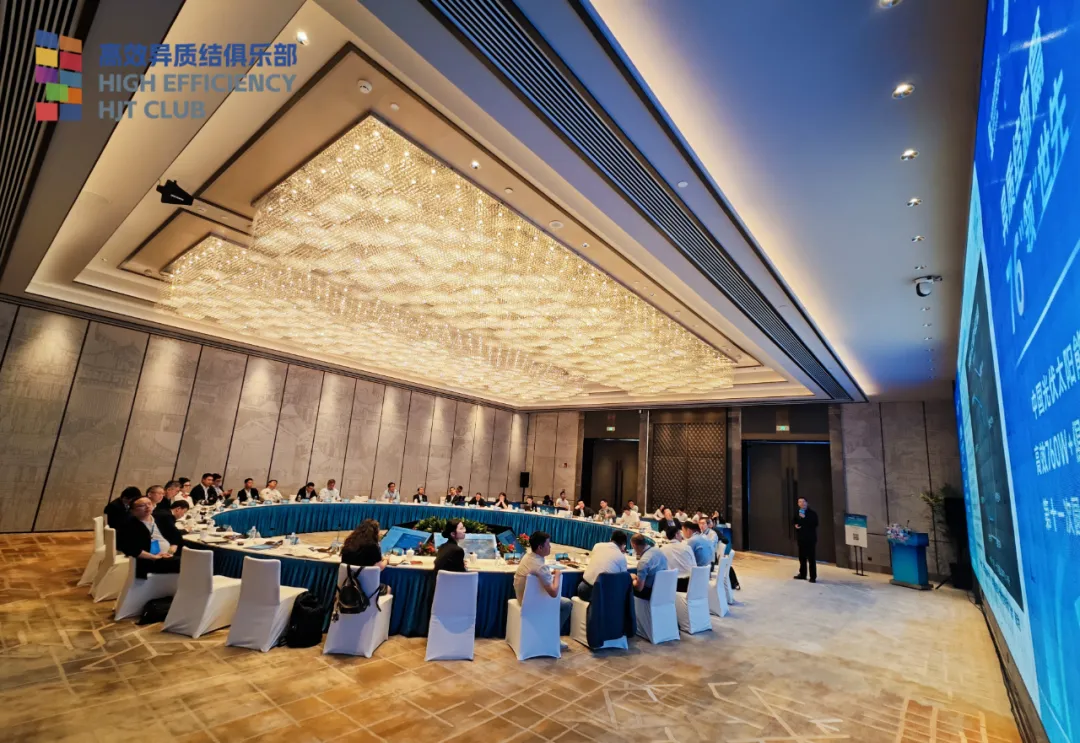
The 11th Roundtable Meeting of the High-Efficiency HJT 760 W+ Club
Despite the difficulties in the HJT industry, it is believed that through unremitting efforts, technological breakthroughs and vigorous development of the industry will be realized. As the 11th High-Efficiency HJT 760 W+ Roundtable concluded, the event showcased the collective wisdom and innovation of China’s PV industry. The roundtable set a clear direction for HJT technology development and sent a strong message of resilience to the global solar sector. Leading enterprises, technology pioneers, and industry experts engaged in deep discussions on policy coordination, technical innovation, and market strategy. The gathering served as both a declaration of breakthrough for HJT technology and a starting horn for the industry's high-quality growth. With policy support, technological advancements, and market collaboration converging, China's solar sector is poised to surge forward in the global clean energy race.








